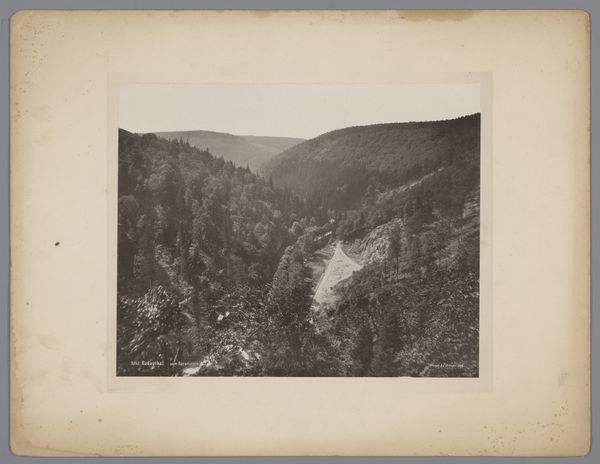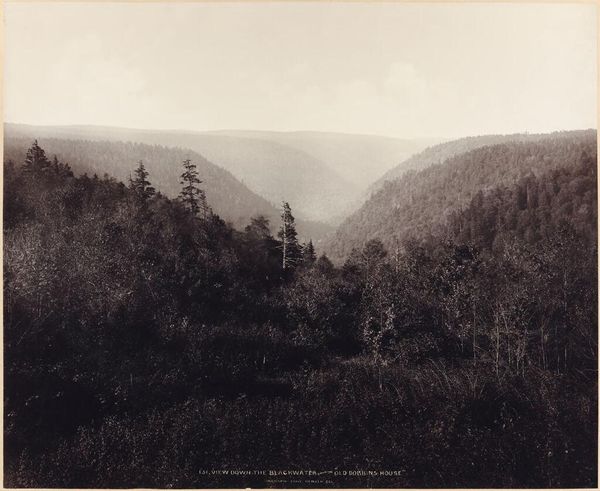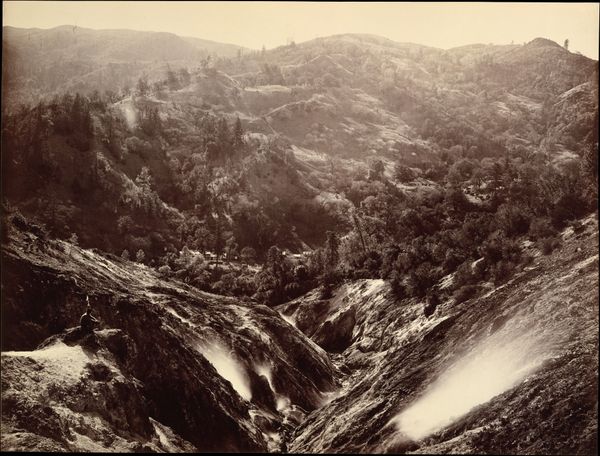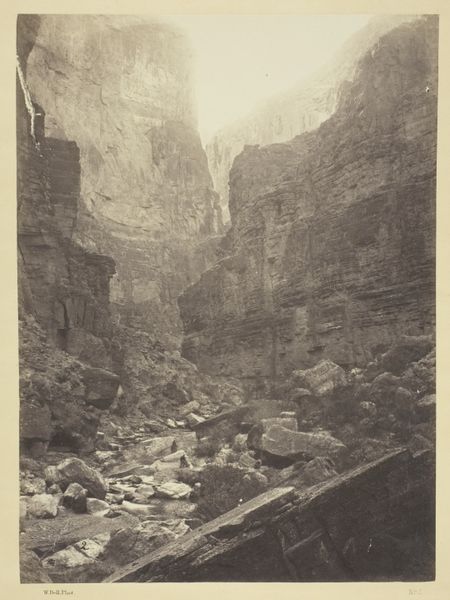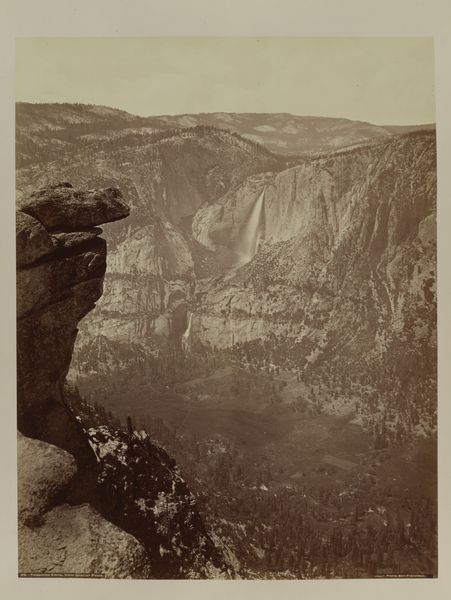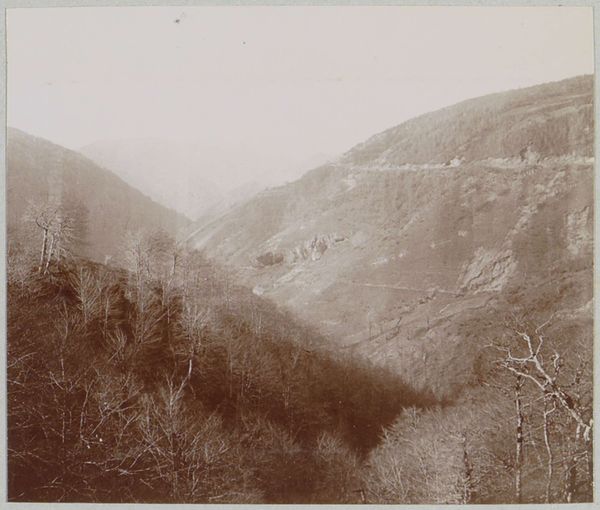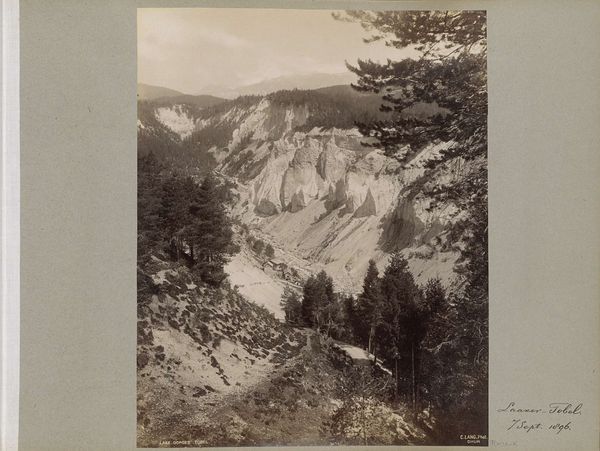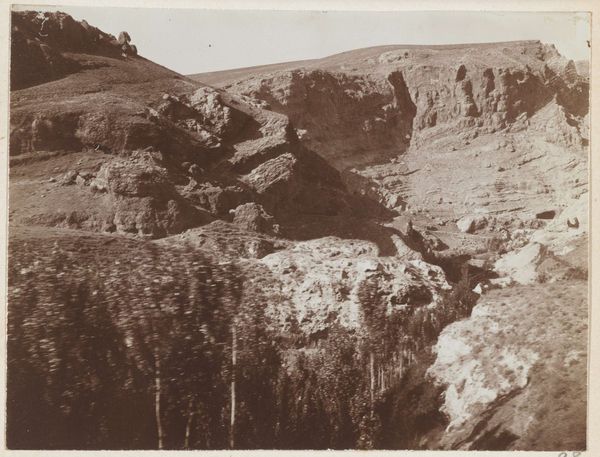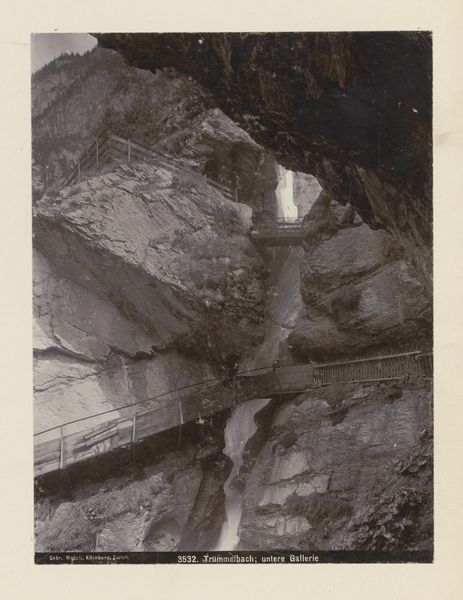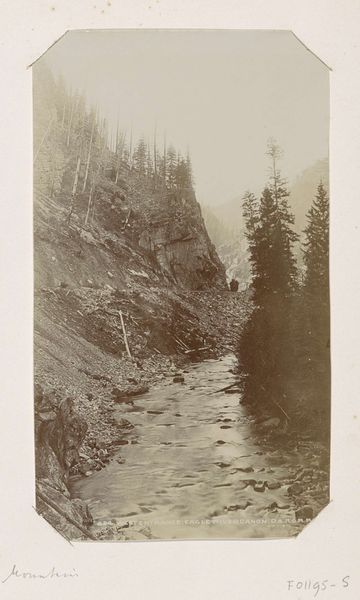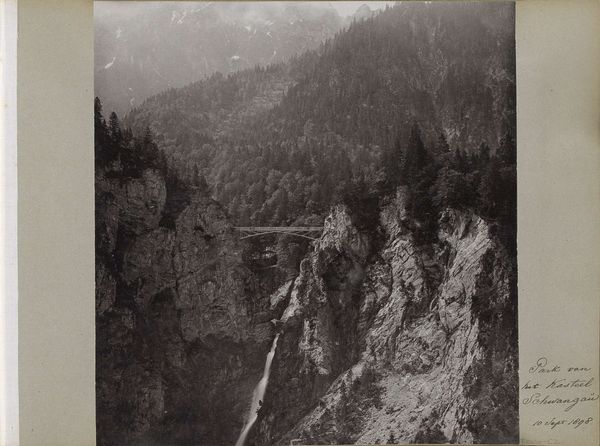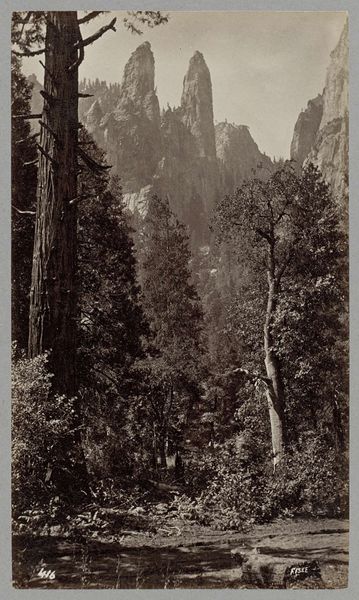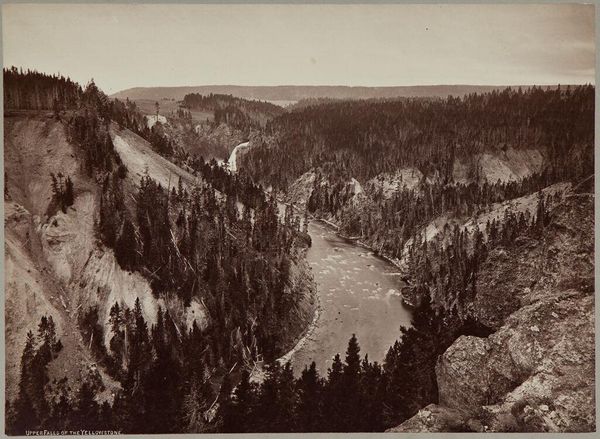
photography, gelatin-silver-print
#
pictorialism
#
landscape
#
photography
#
gelatin-silver-print
#
monochrome photography
Dimensions: height 273 mm, width 210 mm, height 373 mm, width 306 mm
Copyright: Rijks Museum: Open Domain
Editor: This photograph, "Zicht over het Eckerdal met de Rabenklippe in de Harz," taken in 1892 by E. Mertens & Cie, is a gelatin silver print depicting a stark, hilly landscape. The dramatic lighting and the high vantage point give it an almost theatrical feel. What are your thoughts on how the historical context might influence our reading of this image? Curator: Considering its creation date, this photograph falls squarely within the rise of pictorialism. While seemingly objective, landscape photography, especially through the lens of pictorialism, often served cultural and political agendas. Germany, at the time, was a nation forging a strong national identity. Do you think landscapes like this might have played a role in shaping that identity? Editor: That’s interesting! So you’re suggesting that this isn’t just a neutral representation of nature but possibly a constructed image intended to evoke certain feelings about the German landscape and, by extension, German national character? Perhaps a sense of ruggedness, resilience, and romantic beauty? Curator: Precisely. And consider the social function of art during this period. Photography was gaining acceptance as a legitimate art form, challenging established academic painting. What institutions, salons, and critical discourses would have shaped the reception of this kind of landscape image in 1892? Think about the rising middle class and their consumption of art. Editor: I hadn't thought about photography competing with painting at the time. The rising middle class wanting picturesque scenes would explain why they used the pictorialism style to convey this sense of romantic beauty for the rugged landscape of Germany! Curator: Exactly. We should also ask, whose landscape is being valorized here, and for what purpose? How did this kind of image contribute to larger narratives about nature, culture, and nationhood in Imperial Germany? Editor: Wow, I’m starting to see how a seemingly straightforward landscape photograph can be so much more complex, intertwined with socio-political contexts. It makes me look at these images in a new light. Curator: Indeed, understanding the cultural history allows us to engage critically with the seemingly simple beauty on display. We can recognize how aesthetic choices can support broader social and political projects.
Comments
No comments
Be the first to comment and join the conversation on the ultimate creative platform.
